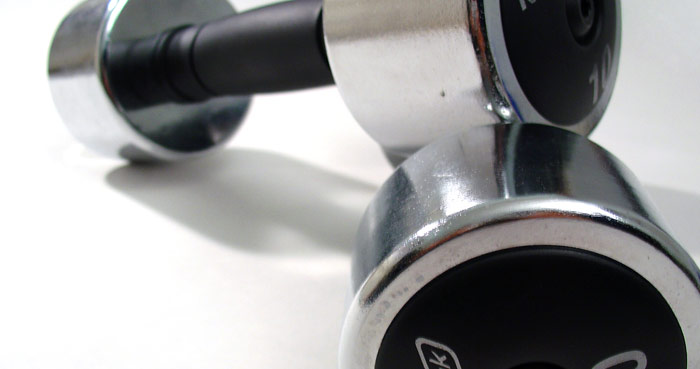 Aging is associated with many physical changes. One of the most obvious and preventable changes is the loss of muscle mass and strength.
Aging is associated with many physical changes. One of the most obvious and preventable changes is the loss of muscle mass and strength.
The medical term for this process is sarcopenia, from the Greek meaning of “poverty of flesh.” Sarcopenia is to our muscle mass what osteoporosis is to our bones. While osteoporosis gets all the press, sarcopenia is actually a more significant factor. Sarcopenia is major predictor of physical disability and is linked to decreased vitality, poor balance, slow gait, dangerous falls, and fractures.
Just as we want to build bone while we are young to help prevent osteoporosis, the same is true for sarcopenia. We need to build muscle while young, and then keep strengthening our muscle mass as we age.
Muscle mass increases in childhood and peaks during the late teens through the mid-to late 20s. After that, muscle mass slowly declines. From the age of 25 to 50 the decline in muscle mass is roughly 10%. In our 50s the rate of decline is slightly accelerated, but the real decline usually begins at 60 years. By the time a person reaches the age of 80 their muscle mass is a little more than half of what it was in their 20s—unless they take strong steps to fight it.
Causes of Sarcopenia
One of the key underlying features of sarcopenia is that as we age, the muscle cells lose their ability to respond to growth-promoting substances, especially insulin and insulin-like growth factors. Insulin resistance is also an underlying feature of most cases of obesity and type 2 diabetes. Another key factor in the development of sarcopenia is inflammation—not the kind of inflammation that occurs when you sprain your ankle or scrape your knee. This type of inflammation is referred to as “silent inflammation,” and it is emerging as the underlying feature in virtually every chronic degenerative disease, including heart disease, cancer, strokes, diabetes, and Alzheimer’s disease.
Dietary Tips to Prevent Sarcopenia
The following dietary recommendations are quite effective in reducing silent inflammation, so they not only fight sarcopenia, but other health conditions associated with aging as well.
- Reduce the amount of saturated fat, trans fatty acids, cholesterol, and total fat in the diet by eating fewer animal products and more plant foods. Read labels!
- Increase your intake of omega-3 oils by eating flaxseed oil, walnuts, and cold-water fish like salmon. Eat at least two, but no more than 3, servings of fish per week.
- Increase the intake of monounsaturated fats and the amino acid arginine by eating more nuts and seeds, such as almonds, Brazil nuts, coconut, hazelnuts, macadamia nuts, pecans, pine nuts, pistachios, sesame and sunflower seeds, and using a monounsaturated oil, such as olive, macadamia, or canola oil for cooking purposes.
- Eat 5 or more servings daily of a combination of vegetables and fruits, especially green, orange, and yellow vegetables; dark colored berries; and citrus fruits.
- Limit the intake of refined carbohydrates (sugar and refined grains). Sugar and other refined carbohydrates lead to the development of insulin resistance, which, in turn, is associated with increased silent inflammation.
- Utilize the benefits of whey protein by taking 25 to 50 grams of whey protein daily. For severe sarcopenia, I recommend a dosage of 1 gram for every 2 pounds of body weight.
- If you are on a strength-training program, take 1 gram of creatine for every 50 pounds of body weight.
Weight Training to Prevent Sarcopenia
Perhaps the most important step to preventing sarcopenia is to follow a regular strength training program—that is, lift weights or engage in resistance exercises. The benefits of strength training are vast, particularly for women and for people over 50. In addition to helping burn more fat, a larger muscle mass is associated with a healthier heart, improved joint function, relief from arthritis pain, better antioxidant protection, and higher self-esteem. While many women do not strength train because they fear gaining weight, just the opposite occurs. Muscle mass is the primary fat burning furnace in the body. The more muscle mass you have, the more fat you burn.
You don’t have to lift barbells or dumbbells or utilize clumsy machines to strength train. Resistance exercises include those which utilize your body weight, such as pushups, crunches, squats, step-ups, and lunges. There are even forms of yoga that build strength and muscle mass.


